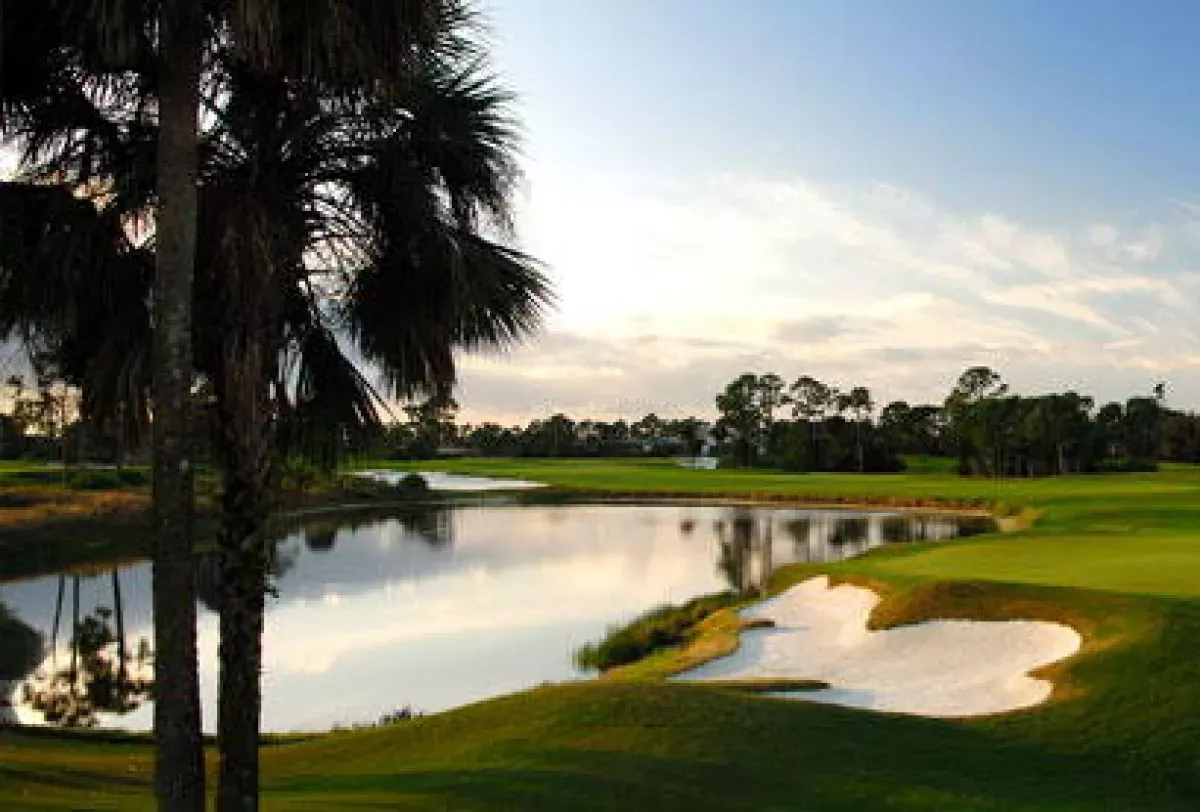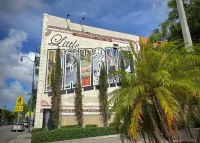Port St. Lucie is a city located in St. Lucie County, Florida, and is recognized as the most populous municipality in the county. As per the 2020 census, it has a population of 204,851, making it the seventh-most populous city in Florida. The city is situated 125 miles southeast of Orlando and 113 miles north of Miami. Port St. Lucie serves as a principal city in the Port St. Lucie Metropolitan Statistical Area, encompassing St. Lucie and Martin counties, with an estimated population of 502,521 in 2021. Additionally, it is part of the Miami-Fort Lauderdale-Port St. Lucie Combined Statistical Area, which had an estimated population of 6,841,100 in 2021.
1958: General Development Corporation's Land Purchase
In 1958, the General Development Corporation (GDC) purchased River Park development and 40,000 acres along the North Fork of the St. Lucie River for $50 million. This acquisition set the stage for the future development of Port St. Lucie, transforming largely uninhabited land into a planned community.
1959: First Bridge Over St. Lucie River Opened
In 1959, the General Development Corporation opened its first bridge over the St. Lucie River, facilitating direct automobile access to the area that would become Port St. Lucie. This infrastructure development was crucial for the city's growth and accessibility.
February 25, 1961: Housing Developments in Port St. Lucie
By February 25, 1961, Port St. Lucie had developed 250 homes, marking significant progress in its growth as a new city. The General Development Corporation played a key role in this expansion.
April 27, 1961: Incorporation of Port St. Lucie
On April 27, 1961, Port St. Lucie was officially incorporated as a city following the passage of House Bill No. 953, which was proposed by State Representative Rupert Smith and signed by Florida Governor C. Farris Bryant.
2000: Income and Poverty Statistics in 2000
As of 2000, the median household income in Port St. Lucie was $40,509, with 7.9% of the population living below the poverty line. These figures provided insights into the city's economic conditions at the turn of the century.
2000: Language Diversity in Port St. Lucie 2000
In 2000, 88.05% of Port St. Lucie residents spoke English as their first language, with Spanish, Italian, French, and other languages contributing to a total of 11.94% speaking non-English languages at home, reflecting cultural diversity.
2000: Age Distribution in Port St. Lucie 2000
In 2000, Port St. Lucie's population distribution included 24.3% under 18 and 18.8% aged 65 or older, with a median age of 40, reflecting a balanced age demographic.
2000: Census Demographics for Port St. Lucie 2000
In 2000, Port St. Lucie's population was 88,769, with a diverse demographic composition and a population density of 453.7 people per square kilometer. The racial makeup was predominantly White, with Hispanic or Latino individuals making up 7.52% of the population.
2000: Household Statistics from 2000 Census
The 2000 census revealed that 31.6% of households in Port St. Lucie had children under 18, and 61.8% were married couples. The average household size was 2.60, and the average family size was 2.94, highlighting family-centric demographics.
2001: 2001 Pop Warner National Championship
In 2001, the Jr. Peewee Pirates from Port St. Lucie achieved a perfect 17-0 season, winning the Pop Warner National Championship. This marked an early milestone in the city's history of excellence in youth sports.
June 3, 2002: Expansion of Treasure Coast Connector
On June 3, 2002, the Florida Department of Transportation approved funding to expand Port St. Lucie's bus system to Martin County, evolving it into the Treasure Coast Connector and enhancing regional public transportation.
2004: Hurricane Frances Hits Port St. Lucie
In 2004, Hurricane Frances, a Category 2 storm, directly hit Port St. Lucie, causing significant damage and highlighting the city's vulnerability to hurricanes.
2005: Hurricanes Jeanne and Wilma Strike
In 2005, Hurricanes Jeanne and Wilma, both Category 3 storms, struck Port St. Lucie, reinforcing the need for improved disaster preparedness in the region.
2006: Development of Tradition Community
In 2006, CC began developing Tradition, a community west of Interstate 95 in Port St. Lucie. The area, previously a cattle ranch, was transformed into a residential and commercial hub with plans for 18,000 residences and 13 million square feet of commercial space.
2007: Beginning of Housing Market Collapse
In 2007, Port St. Lucie began experiencing a housing market collapse, which led to rising unemployment and financial instability in the region.
2007: Ginn sur Mer Classic at Tesoro
In 2007, Port St. Lucie hosted its first ever PGA Tour event, the Ginn sur Mer Classic at Tesoro. This event was part of the renowned PGA Village golf complex, which features 54 holes of golf, a learning center, and a historical center.
2008: Opening of Florida Center of Innovation
In 2008, Tradition and Core Communities opened the Florida Center of Innovation, a research park focused on drug discovery and healthcare. It included institutions like Torrey Pines Institute and VGTI, positioning Port St. Lucie as a hub for scientific research.
February 2009: Economic Challenges and Response
In February 2009, Port St. Lucie faced a 10.5% unemployment rate amid the housing market collapse. Nearly 11,000 homes went into foreclosure in 2008, prompting the county to consider declaring a disaster area to access emergency funds for infrastructure projects.
2009: Tradition Chosen for HGTV's Green Home
In 2009, Tradition was selected as the location for HGTV's Green Home, highlighting the community's sustainable development practices and enhancing its reputation as a model residential area.
2009: 2009 Pop Warner National Championship
In 2009, the Jr. Midget Pirates from Port St. Lucie won the Pop Warner National Championship, achieving a perfect 16-0 season. The championship took place at Disney's Wide World of Sports Complex, highlighting the city's success in youth sports.
2010: 2010 Census Data for Port St. Lucie
As of the 2010 United States census, Port St. Lucie had 164,603 residents, 56,408 households, and 41,785 families, indicating growth from the previous decade.
2011: 2011 Pop Warner National Championship
In 2011, Port St. Lucie's Jr. Midget Pirates claimed the Pop Warner National Championship again, underscoring the city's strong youth sports programs. This victory reinforced Port St. Lucie's reputation for producing talented young athletes.
2015: Closure of VGTI Facility at TCI
In 2015, the Vaccine and Gene Therapy Institute (VGTI) shut down its facility at the Tradition Center for Innovation, marking a setback for the research park's original vision.
2017: Plans for TAMCO Manufacturing Center
In 2017, TAMCO, a subsidiary of City Electric Supply, announced plans with Port St. Lucie City Council to construct a $38 million manufacturing and distribution center in Tradition Commerce Park, showcasing the city's economic growth initiatives.
2018: Construction of TAMCO Facility Begins
In 2018, construction began on the TAMCO manufacturing and distribution center, a significant development in Port St. Lucie's economic landscape.
October 2019: Completion of Crosstown Parkway
In October 2019, the Crosstown Parkway was completed in Port St. Lucie, Florida. This roadway serves as a crucial east/west connection between Interstate 95 and U.S. 1. It includes Florida's first superstreet intersection at Crosstown Parkway and Floresta Drive, providing a high-capacity crossing of the North Fork of the St. Lucie River.
2019: Neighborhood Naming Initiative
In late 2019, Port St. Lucie began naming its neighborhoods, a move aimed at fostering community identity and organization. By 2020, the city had 33 designated neighborhoods.
2019: Treasure Coast Tritons Soccer Team
Starting in the 2019 season, the Treasure Coast Tritons soccer team began playing at the South County Stadium in Port St. Lucie, Florida. This expanded the city's involvement in competitive sports and provided additional recreational opportunities for residents.
2020: Renaming to Area Regional Transit (ART)
In 2020, Port St. Lucie's bus service was renamed to Area Regional Transit (ART), operating eight routes, with five serving the city, marking a modernization of the public transit system.
2020: Port St. Lucie Population Census 2020
In 2020, the census recorded Port St. Lucie's population at 204,851, making it the most populous city in St. Lucie County, Florida, and the seventh-most populous in the state. The city is part of the Port St. Lucie Metropolitan Statistical Area, which had an estimated population of 502,521 in 2021. The city is also a principal part of the Miami-Fort Lauderdale-Port St. Lucie Combined Statistical Area, which was estimated to have 6,841,100 residents as of 2021.
2020: Demographic Overview from 2020 Census
The 2020 census reported 204,851 people, 68,241 households, and 51,199 families living in Port St. Lucie, reflecting the city's growth and demographic changes.
Trending

7 months ago Randy Travis and Wife Invest in Jackson's Metrocenter Mall Revitalization Project.

7 months ago Gavin Newsom faces challenges in final term amid budget concerns and 2028 ambitions.

1 month ago Stallone Protected Himself with Body Armor for Snipes' Intense 'Demolition Man' Performance.

2 months ago Al Pacino's Godfather Streaming Success; Heat 2 Production Moves Forward with Mann
7 months ago Severe Thunderstorms Expected in Alabama: High Winds and Heavy Rainfall Possible

4 months ago Cillian Murphy returns in Netflix's 'Steve' as a headteacher with a complex role.
Popular

Candace Owens is an American conservative political commentator and author...

Ilhan Omar is an American politician currently serving as the...

XXXTentacion born Jahseh Dwayne Ricardo Onfroy was a controversial yet...

Tom Cotton is an American politician and Army veteran currently...

Kelsey Grammer is an accomplished American actor producer and singer...
The Kennedy Center Honors are annual awards recognizing individuals and...


